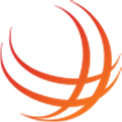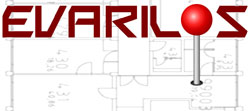SICS Swedish ICT AB is a non-profit
research organization owned by the Swedish government (60 %) and industry. SICS mission is to contribute
to the competitive strength of Swedish industry by conducting advanced and focused research in strategic
areas of computer science, and actively promoting industrial use of new research ideas and results in industry
and society at large. SICS research focus is on distributed and networked interactive real-time systems and
applications – spanning from infrastructural issues to software methodologies to human- computer
interaction. SICS works closely with the national and international research community and collaborates
with industry, carrying our joint projects and acting as an external R&D resource for small and mid-sized
enterprises. SICS has also a proven record of disseminating and promoting industrial deployment of its
research findings, including establishing of spin-off companies, as well as licensing of its software and
patents. SICS is one of the leading European institutions in wireless sensor networks. The Contiki operating
system is the most widely used European operating system for wireless sensor nodes. Other widely used
system software from SICS includes the uIP protocol stack, the world’s smallest fully compliant IP stack,
and the simulators COOJA and MSPsim. Furthermore, SICS has the highest number of accepted full papers
at ACM SenSys, one the most prestigious sensor network conferences. In 2011, two out of the three best
paper candidates at the SPOTS track of IEEE/ACM IPSN were co-authored by SICS researchers.
Role in the project: SICS will act as WP leader for WP3 and will also contribute significantly to WP2 in
particular with the methods developed at SICS.
Experience: SICS has worked on localization in two directions. First, SICS researchers have worked on
localization based on Angle of Arrival using an antenna that was developed at SICS precisely for this task
and we will use a new improved version in EVARILOS. Furthermore, SICS researchers have improved the
accuracy of ToF ranging for COTS sensor nodes when sensor nodes are not in line of sight (both indoors and
outdoors). SICS researchers have also been involved in developing JamLab, a tool that enhances existing
sensor network testbeds with realistic and controlled interference. The first JamLab prototypes have been
implemented on the TmoteSky sensor node platform also used in Berlin’s TWIST testbed.
Assoc. Prof. Thiemo Voigt leads the Networked Embedded Systems Group (NES) at the Swedish Institute
of Computer Science (SICS). He received his Ph.D. in Computer Systems from Uppsala University in 2002.
From September 2002-July 2003, he was a postdoctoral fellow at Freie Universität Berlin. Thiemo leads
several national and international projects in the area of wireless sensor networks. He also participated
actively in the EU Coordination Action Embedded WiSeNts and now in the CONET NoE. During the last
five years, he has published more than 55 peer-reviewed papers on wireless sensor networks, both at
workshops, conferences and in journals. He was one the main organizers of the successful Workshop on
Real-World Wireless Sensor Networks (REALWSN), arranged in Stockholm in June 2005, in Uppsala in
June 2006, in Glasgow in April 2008 and in Colombo (Sri Lanka) in December 2010. Thiemo has also been
on the TPC for most of the important conferences in the area of sensor networks including ACM SenSys
2007. In 2007, he was TPC co-chair for EWSN, the most important European conference in the area of
sensor networking where he is on the steering committee. In 2010, he was TPC co-chair for ACM/IEEE
IPSN – one of the WSN flagship conferences. Thiemo is the coordinator for the FP7 project makeSense.
Together with co-authors, he has devised a two-way time-of-flight based localization method that uses
multiple channels and has shown that it achieves more accurate distance measurements in scenarios where
there is no line-of-sight between the objects than previous COTS-based time of flights methods. He has also
been involved in the JamLab work on generating controlled and realistic interference that lead to a best paper
candidate at the IEEE/ACM IPSN conference, one of the most prestigious sensor networking conferences.
Assoc. Prof. Martin Nilsson is a senior researcher at SICS. Martin Nilsson has a wide interdisciplinary
background ranging over applied mathematics, computer science, electronics, and robotics. Most recently he
has worked on signal processing problems for measuring Internet transmission bandwidth, localization in
sensor networks and antenna theory. Further, he has applied an engineering perspective to the analysis of the
cerebellar system function, applying principles of signal processing, theoretical physics, and stochastic
process theory. In order to work with localization based on angle of arrival, Martin Nilsson has designed the
SICS Parasitic Interference Directional Antenna (SPIDA), an antenna specifically designed for low cost
sensor node that is easily controllable via simple APIs from TmoteSky sensor nodes. For sensor node
localization, Martin Nilsson presented a method based on recursive estimation that computes a new position
estimate for every measurement using a Kalman filter.
|


News:
Report on the results of the real-life experiments in the validation scenarios is available
Report on final results of interference robust localization is available
Final Version of the EVARILOS Benchmarking Handbook is available
Evaluation Opportunities ‐ Technical Annex Track 1
 Track 2
Track 2

Open Challenge ‐ Announcement of Winners
Join the EVARILOS mailing list
FIRE web site
FIRE - Brochure (2015)
Next events:
IPSN 2016
11‐14 April, 2016, Vienna
Net Futures 2015
20‐21 April, 2016, Brussels
ICC 2016
23‐27 May, 2016, Kuala Lumpur
IoT Week 2016
31 May‐2 June, 2016, Belgrade
EuCNC 2016
27‐30 June, 2016, Athens
IPIN 2016
4‐7 October, 2016, Madrid
EVARILOS Start: 1.11.2012
Project duration: 30 month
Contract Nr: 317989
EC Contribution: 1.379.944€
Participants: TUB, ADV, iMinds, SICS, THC
Project Fiche

|

